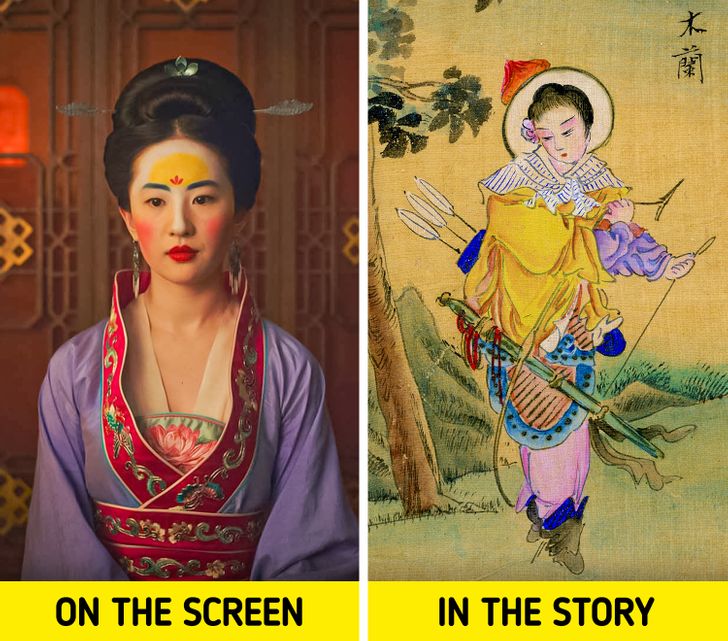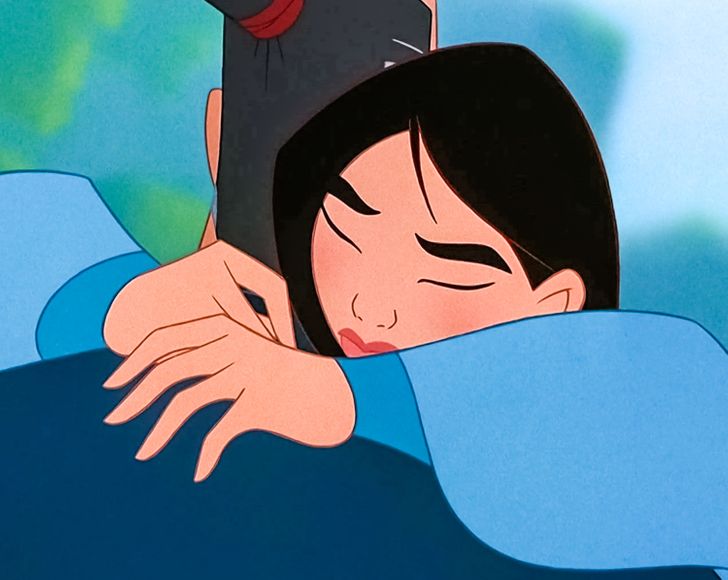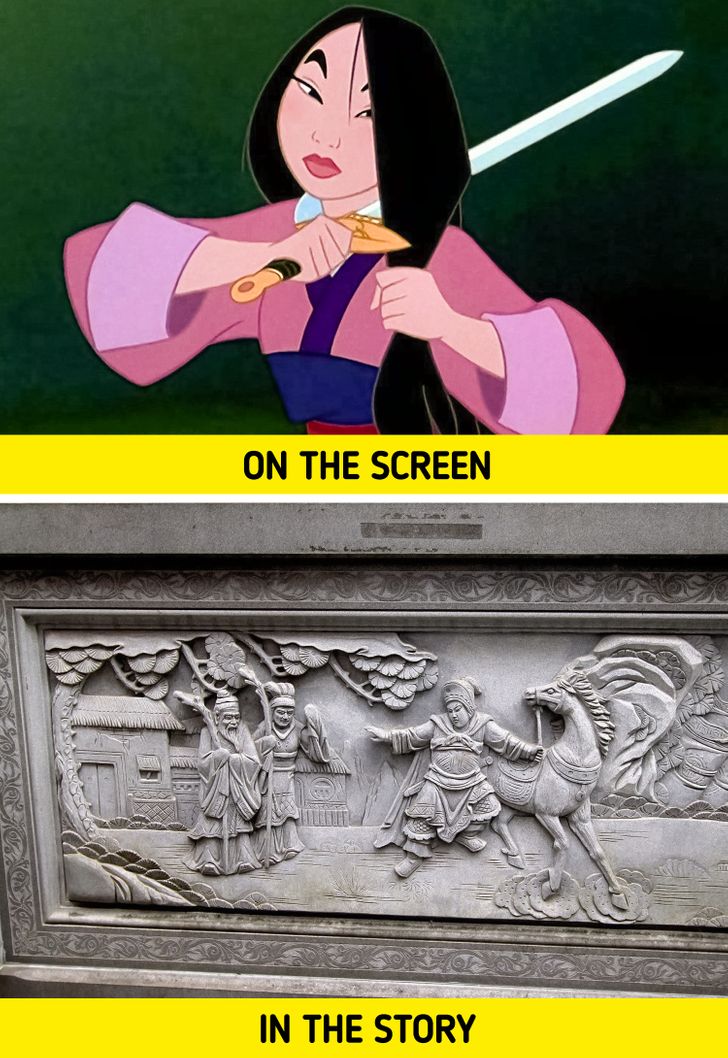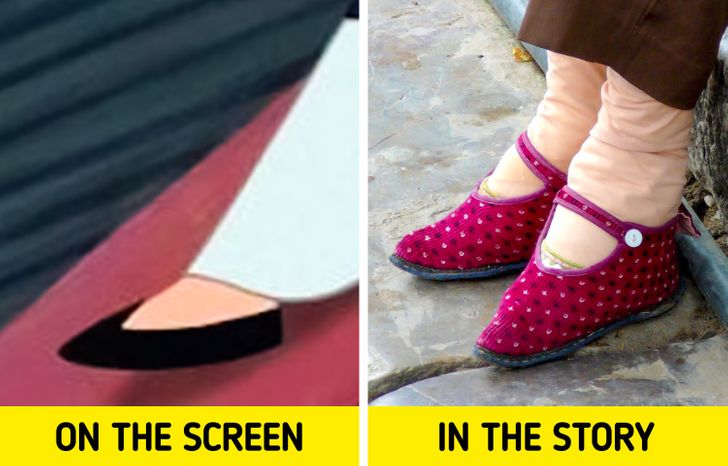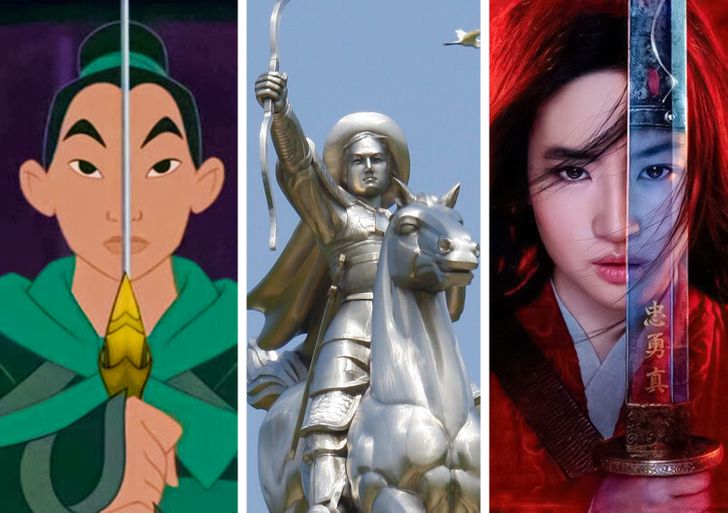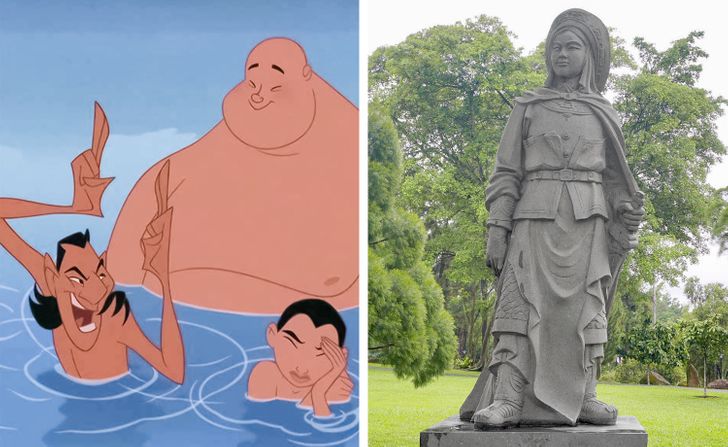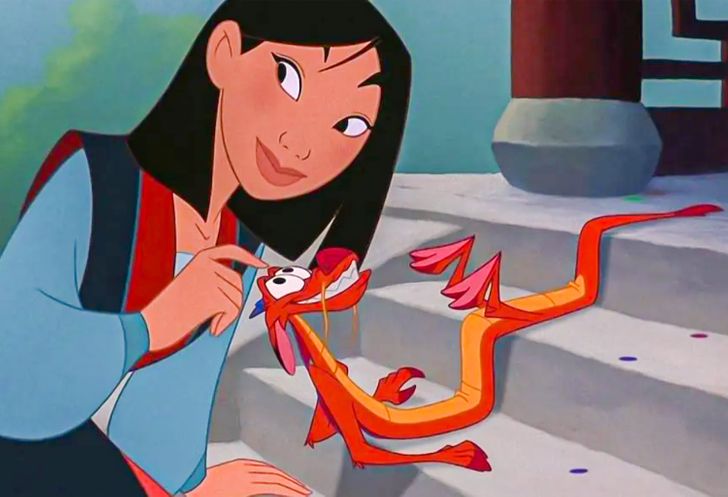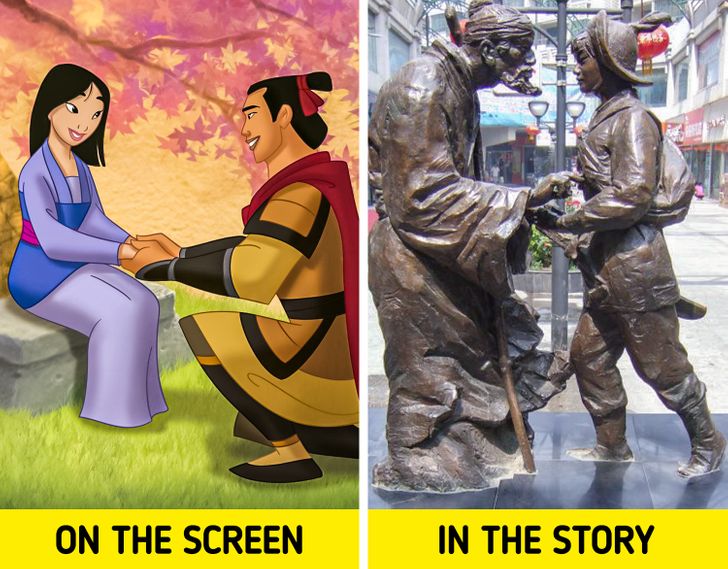Mulan is my favourite movie❤️❤️. I liked the movie version than the cartoon version.
The Original Story of Mulan Is More Hair-Raising Than the One We Saw on Screen
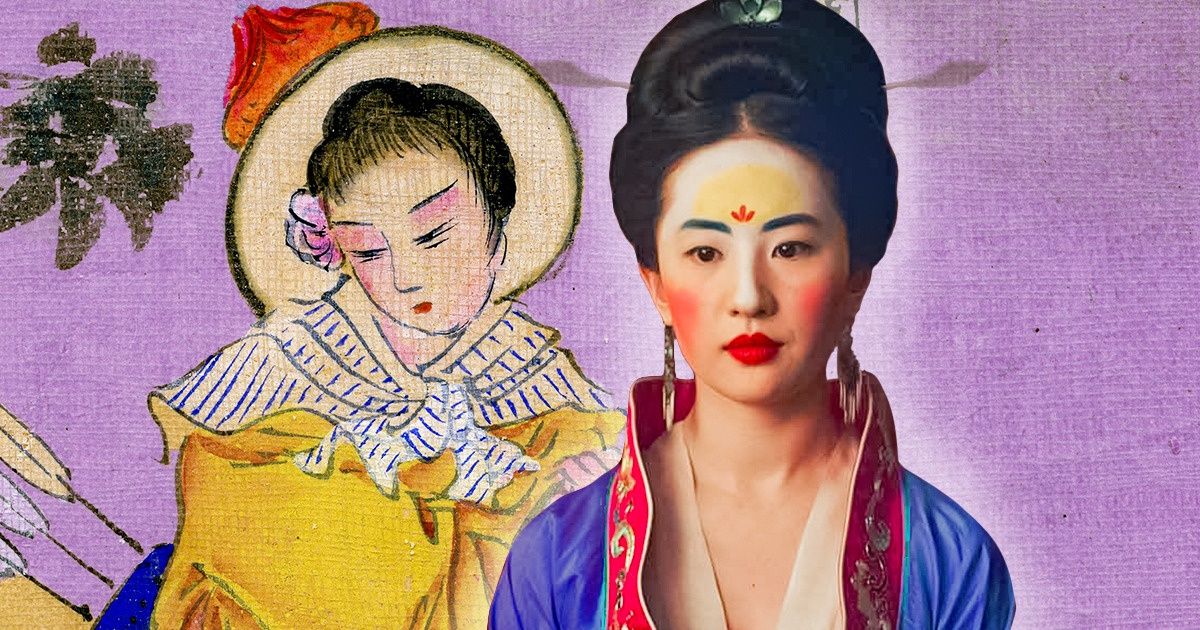
The legend of the female warrior, Hua Mulan, was so popular and motivating for people, that it was told in China for centuries. The first written record was known as the Ballad of Mulan, which was written during the dynasty of the Northern Wei. As times changed, the main plot stayed the same, while some details were slightly adapted to illustrate the main trends of the time in which it was told. And some of them reveal very peculiar and sometimes brutal details that definitely can’t be shown on TV today.
Becoming an ideal bride wasn’t that important to her.
Disney’s adaptation: In both the animated movie and the recent adaptation, we meet the matchmaker who trains young ladies to become proper brides, ensuring their prosperous futures. In comparison to other women, Mulan is portrayed as a rather clumsy girl who fails to undergo this training and can’t even properly pour a cup of tea. In the end, she becomes a disgrace to her family because of this.
The legend: Matchmaking did exist in ancient China, and it was an essential ritual. However, neither the ballad nor the ancient play mentioned such an act. Interestingly, the play tells us that Mulan had to go through something even more intense: from a young age, she was attempting to master martial arts with her father. We could see a similar fragment of this at the beginning of the film too.
Her father was scared to go to war again.
Disney’s adaptation: Here, Mulan’s father is depicted as an old man who fought many battles and is already too injured to continue serving his country. Even though it’s physically hard for him, he has pride and accepts his duty.
Legend: In the ancient play, it was also shown that her father was so depressed after receiving his conscription notice that he didn’t want to live anymore. In the ballad, it’s also mentioned that Mulan had no other choice but to go herself, as she had no older brother who was old enough to go to war. She had a little brother, but he was too young for this.
Mulan’s leaving to fight was a collective decision.
Disney’s adaptation: In the animated movie and the recent cinematic version, Mulan makes the decision to run away and take her father’s place in the army to save him. All of this is done in secret. She takes his armor and sword and leaves in the night. Her family only finds this out in the morning after the girl is already gone.
Legend: In the play, Mulan discusses her decision with her family. She tells them that she wants to buy a horse, a saddle, a steed, a blanket, a bridle, and a whip. After a short debate, her family accepts this decision. In the play, she even learns how to ride a horse and practices with a spear.
Her chest and voice weren’t the only things that could reveal her female identity.
Disney’s adaptation: If someone were to discover that Mulan was a female, she’d get killed — this fact was emphasized many times throughout the story. Thus, joining the army turned out to be a very risky decision for her, so she did everything to try to hide her gender. Although the way her identity was revealed in the animated and cinematic versions differed, it was mentioned how shameful her actions were.
Legend: In the play (which was written in the sixteenth century), Mulan was shown with her bound feet, which had been a Chinese custom practiced for 10 centuries. Realizing that her small feet would reveal her identity, she had to unbind them before wearing men’s shoes. However, nothing was mentioned about the strict punishment that would be enforced if someone were to realize her secret.
Mulan was already a rather competent warrior, even before she joined the army.
Disney’s adaptation: A significant part of the story shows us how hard Mulan trained in the army. In the animated version, she gets stronger under the command of young General Li Shang. There, she also takes a new name, “Ping.” In the film, her new name, “Hua Jun” is what she’s given when being instructed by the old, experienced, strict Commander Tung. In both versions, we see Mulan as a person who has to work twice as hard to make her way to the top.
Original: The ancient play tells us that Mulan took a new name for herself, “Hua Hu,” and she was shown as a skillful and talented warrior that wasn’t scared of going to battle. Even though she had to endure army training, it wasn’t hard for her.
Her comrades even suspected something was off.
Disney’s adaptation: In the animated movie, we meet the 3 supporting characters who Mulan fights alongside in the army: Yao, Ling, and Chien Po. In the film, Mulan makes quite a few friends in the army, and one fellow soldier, Honghui, gets a lot of attention. In both versions, we see that no one actually suspects Mulan’s true identity, and she even manages to make good friends with her peers.
Original: In the ballad, we don’t see any mention of Mulan’s close friends. However, the play tells us another interesting thing: her comrades noticed that Hua Hu is a bit weird. “He” valued privacy, and any time he wanted to relieve himself, he would do it alone, while other men didn’t have any problem doing it openly next to others. When Mulan learned about their suspicions, she promised to tell them her secret after they returned home.
The magic was used for completely different purposes.
Disney’s adaptation: In the animated version, we meet Mushu, the so-called guardian spirit of the Fa family that later also becomes Mulan’s companion. In the film, the playful dragon was removed, but another warden was added to protect Mulan and help her find the right direction: the phoenix. In both versions, these spirits are needed to help and protect Mulan during the difficulties that she faced.
Original: Neither Mushu nor the phoenix was present in the original ballad. No one was there to lend her a helping hand or to create problems in her path, other than the regular people she encountered. However, magic still took place in some versions of the story. Since the size of her feet was a big concern, when she comes back from the war, she uses a magic potion on them. That then turns her feet back to their original tiny size, making her look more feminine.
Her romantic relationship wasn’t as poetic as we saw on the screen.
The statue shows Mulan coming back home and being greeted by her father.
Disney’s adaptation: In the animated movie, we could see how the romantic story between Mulan and her general was developing. She even ends up marrying him in the second animated movie, Mulan II. In the film, the romantic storyline was switched to revolve around her fellow comrade, Honghui. However, it’s far more modest here, and Mulan only touches his hand once before she leaves to go home. We never find out if she ends up marrying him.
Original: The ballad doesn’t mention anything about Mulan being married. However, the play tells us that she returned home after 12 years of serving in the army and her parents quickly arranged her marriage with a next-door neighbor.
What facts from Mulan’s story impressed you the most?
Comments
Related Reads
Model Lost Entire Lips in Pitbull Attack, And She Reflects on Her Recovering Journey

10+ Stories That Prove Parents Would Risk Anything for Their Kids
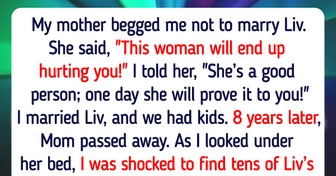
I Refuse to Let My Boss Take Credit for My Work Again, So I Decided to Outsmart Him

I Was Shamed for Being a Single Mom — but My Little Girl, 6, Had the Last Word

I Refused to Do Extra Work, and HR Tried to Punish Me

14 People Who Walked Straight Into Awkward Moments

16 Moments That Remind Us to Stay Kind Even If the World Turns Ice Cold
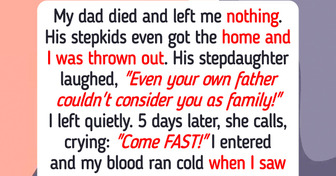
18 Employees Who Saw Their Choices Backfire Hard

I Refused to Stay After My Husband Secretly Spoiled His Daughter—Then I Heard the Truth

I Wasn’t Invited to My Son’s Baby Reveal, and It Led to a Painful Discovery

15+ Raw Stories About Jealousy That Can Leave You Speechless

I Demanded a Nursing Room at Work—Now HR Is Involved

